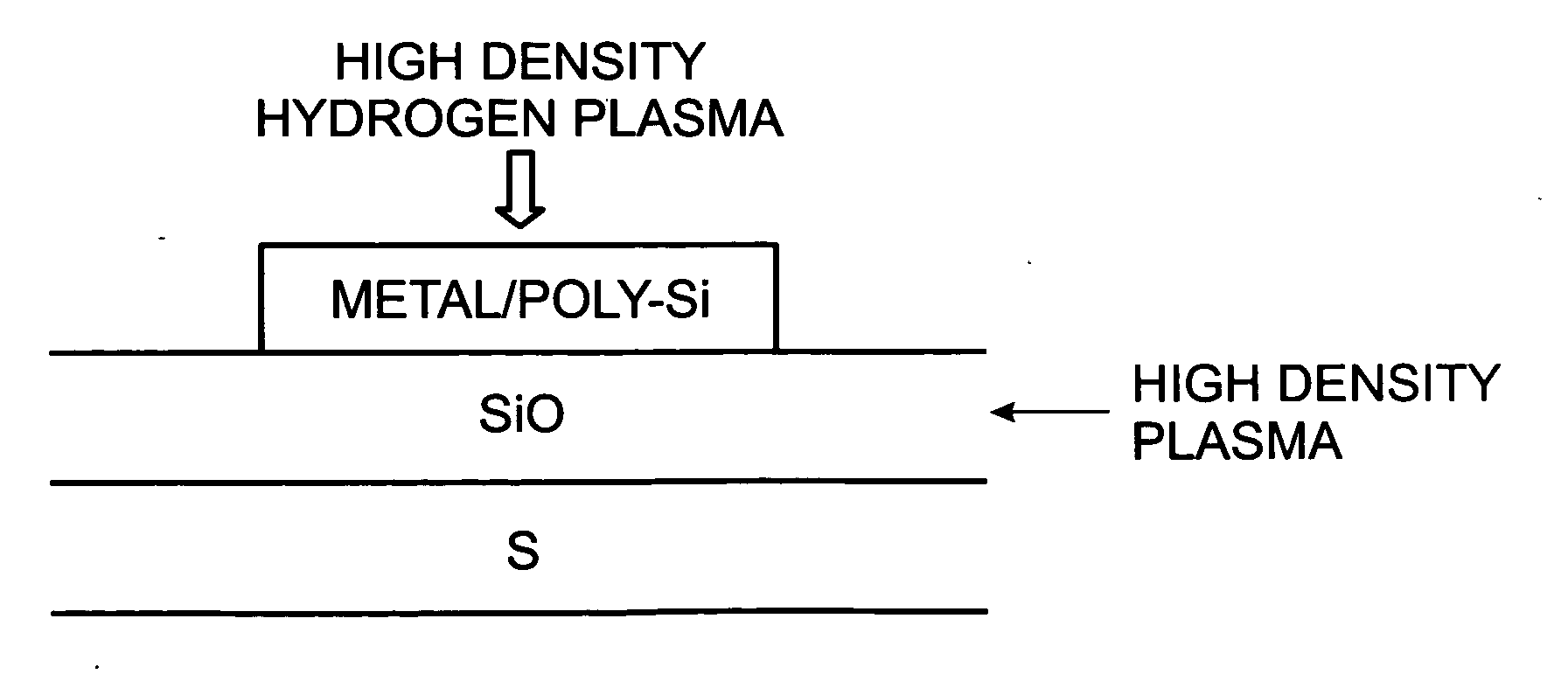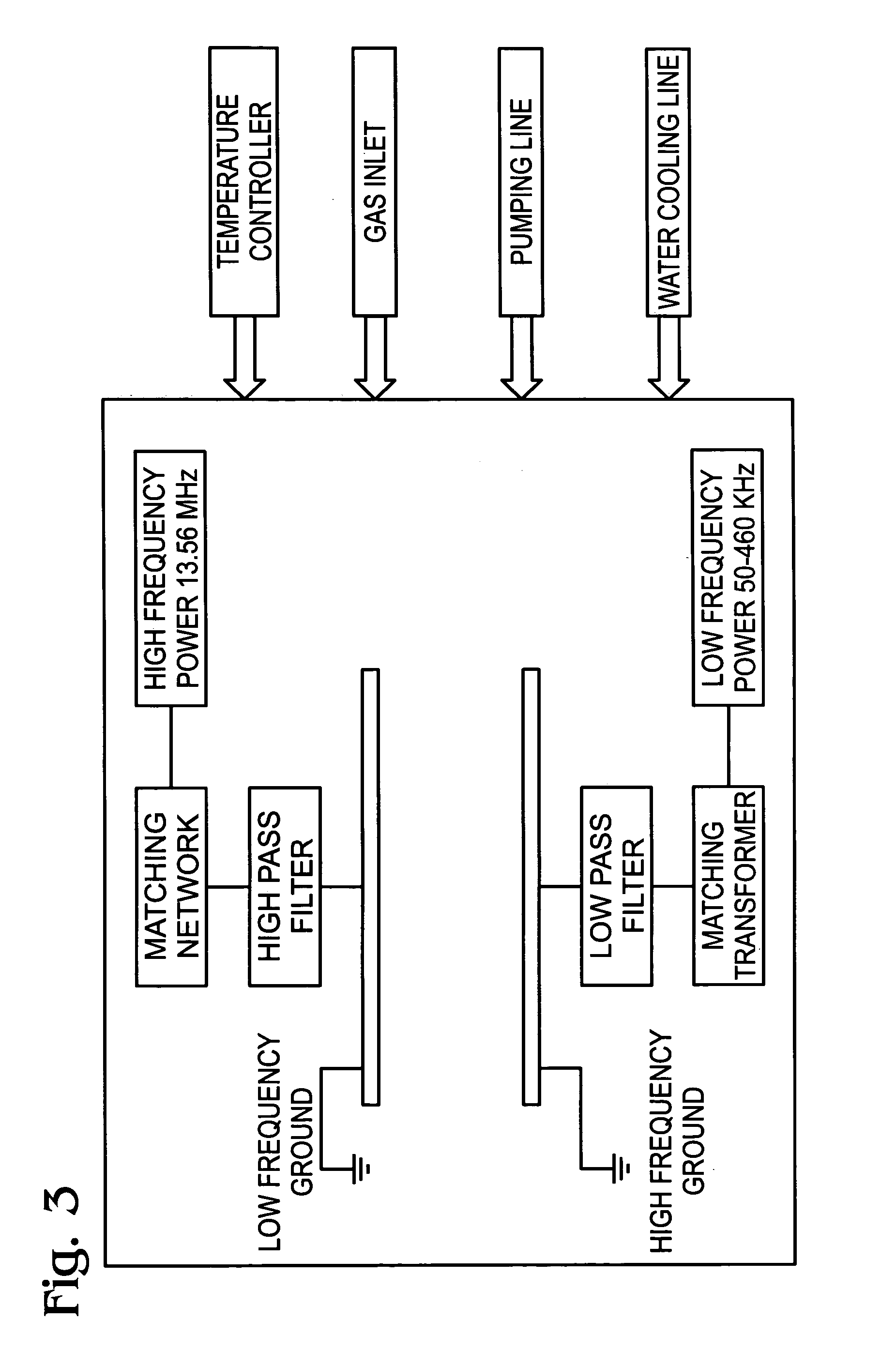High-density plasma hydrogenation
a plasma hydrogenation and high-density technology, applied in the direction of crystal growth process, coating, chemistry apparatus and processes, etc., can solve the problems of high inefficiency of forming gas annealing process for high-throughput commercial applications, preventing the generation of particularly reactive hydrogen species by coupled electrodes, and high inefficiency of fga process for low-temperature devices. achieve the effect of enhancing the concentration and state of active hydrogen species, enhancing the concentration and state of active hydrogen
- Summary
- Abstract
- Description
- Claims
- Application Information
AI Technical Summary
Benefits of technology
Problems solved by technology
Method used
Image
Examples
Embodiment Construction
[0023]FIG. 1 is a partial cross-sectional view of a capacitor device with a hydrogenated oxide interface. The device 100 comprises a transparent substrate 102, sensitive to process temperatures of greater than 600 degrees C. For example, the transparent substrate 102 can be glass, quartz, or plastic. A silicon (Si) film 104 overlies the transparent substrate 102. Note, is some aspects a diffusion barrier (not shown) of a material such as SiO2 or SiOxNy, may separate the Si film 104 and transparent substrate 102. An oxide layer 106 overlies the Si film 104, and a conductive electrode 108 overlies the oxide layer 106. The oxide layer 106 has an interface trap concentration (Dit) of less than 5×1010 eV−1cm−2, a leakage current density of less than 1×10−8 A / cm2 (at 2 MV / cm), and a breakdown field of greater than 8 MV / cm.
[0024]FIG. 2 is a partial cross-sectional view of a liquid crystal display (LCD) thin-film transistor (TFT). The TFT 200 comprises a temperature sensitive transparent s...
PUM
| Property | Measurement | Unit |
|---|---|---|
| temperature | aaaaa | aaaaa |
| frequency | aaaaa | aaaaa |
| pressure | aaaaa | aaaaa |
Abstract
Description
Claims
Application Information
 Login to View More
Login to View More - R&D
- Intellectual Property
- Life Sciences
- Materials
- Tech Scout
- Unparalleled Data Quality
- Higher Quality Content
- 60% Fewer Hallucinations
Browse by: Latest US Patents, China's latest patents, Technical Efficacy Thesaurus, Application Domain, Technology Topic, Popular Technical Reports.
© 2025 PatSnap. All rights reserved.Legal|Privacy policy|Modern Slavery Act Transparency Statement|Sitemap|About US| Contact US: help@patsnap.com



